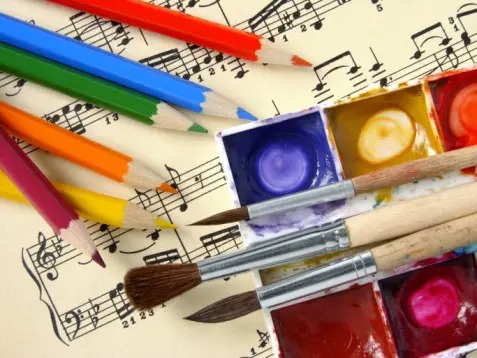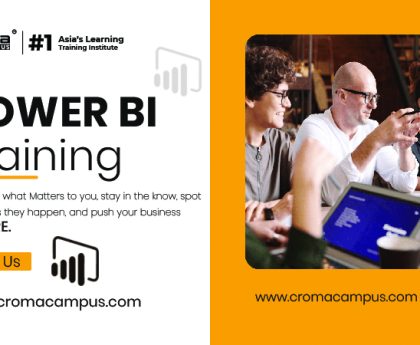Visual arts education is continually evolving, adapting to technological advancements, societal changes, and educational trends. As we look to the future, it is essential to understand the emerging trends and innovations that are shaping visual arts education. These changes promise to enhance the learning experience, making it more engaging, accessible, and relevant for students. This article explores key trends and innovations in visual arts education, highlighting their potential impact on teaching and learning.
Integration of Technology
Digital Tools and Platforms
One of the most significant trends in visual arts education is the integration of digital tools and platforms. Technologies such as graphic design software, digital painting applications, and 3D modeling programs have become integral to art education. These tools offer students new ways to create, experiment, and express themselves. Software like Adobe Creative Suite, Procreate, and Blender provide a wide range of functionalities, enabling students to explore different artistic styles and techniques.
Virtual Reality (VR) and Augmented Reality (AR)
Virtual Reality (VR) and Augmented Reality (AR) are revolutionizing the way students experience and create art. VR allows students to immerse themselves in virtual art studios, museums, and galleries, providing an interactive learning environment. AR, on the other hand, overlays digital information onto the physical world, enhancing traditional art projects with interactive elements. These technologies offer unique opportunities for experiential learning, making art education more engaging and dynamic.
Online Art Classes and Resources
The rise of online education has significantly impacted visual arts education. Online art classes, tutorials, and resources make art education more accessible to a broader audience. Platforms like Skillshare, Coursera, and YouTube offer courses taught by professional artists, allowing students to learn at their own pace. These online resources provide flexibility and convenience, enabling students to access high-quality art education regardless of their geographical location.
Interdisciplinary Approaches
STEAM Education
The integration of arts into STEM (Science, Technology, Engineering, and Mathematics) education, known as STEAM, is gaining momentum. STEAM education emphasizes the importance of creativity and innovation, encouraging students to apply artistic principles to scientific and technical problems. This interdisciplinary approach fosters critical thinking and problem-solving skills, preparing students for the complexities of the modern world. Visual arts projects can be combined with subjects like biology, physics, and engineering to create holistic learning experiences.
Art and Social Justice
There is a growing emphasis on using visual arts education to address social justice issues. Art can be a powerful tool for exploring and challenging societal norms, raising awareness, and advocating for change. Educators are increasingly incorporating themes of equity, diversity, and inclusion into their curricula, encouraging students to create art that reflects their experiences and perspectives. This approach not only enhances artistic skills but also promotes empathy, cultural understanding, and social responsibility.
Personalized Learning
Choice-Based Art Education
Choice-based art education allows students to take ownership of their learning by offering them the freedom to choose their projects, materials, and techniques. This student-centered approach recognizes that individuals have unique interests and learning styles. By providing options and encouraging exploration, educators can foster a more engaging and meaningful learning experience. Choice-based art education promotes autonomy, motivation, and creative expression.
Adaptive Learning Technologies
Adaptive learning technologies use data and algorithms to tailor educational content to individual students’ needs. In visual arts education, adaptive technologies can provide personalized feedback, recommend resources, and suggest areas for improvement. These tools can help educators identify students’ strengths and weaknesses, enabling targeted instruction and support. Adaptive learning technologies make art education more efficient and effective, ensuring that each student receives the guidance they need to succeed.
Community Engagement and Collaboration
Collaborative Art Projects
Collaborative art projects foster teamwork, communication, and community building. These projects can involve students working together on large-scale installations, murals, or digital art pieces. Collaboration encourages the exchange of ideas and perspectives, enhancing creativity and innovation. Community-based art projects, such as public art installations, can also connect students with their local environment and foster a sense of civic engagement.
Global Art Exchanges
The digital age has made it possible for students to collaborate with peers from around the world. Global art exchanges enable students to share their work, learn about different cultures, and gain new insights. Virtual platforms and social media facilitate these exchanges, allowing students to participate in international art projects, exhibitions, and competitions. Global collaboration broadens students’ horizons and promotes cross-cultural understanding and appreciation.
Emphasis on Well-Being and Mindfulness
Art Therapy
Art therapy is increasingly recognized as a valuable component of visual arts education. Engaging in creative activities can have therapeutic benefits, helping students manage stress, anxiety, and emotional challenges. Art therapy techniques, such as guided imagery and expressive arts, can be integrated into the curriculum to support students’ mental health and well-being. This holistic approach acknowledges the interconnectedness of emotional and academic development.
Mindfulness Practices
Incorporating mindfulness practices into visual arts education can enhance students’ focus, creativity, and emotional regulation. Mindfulness activities, such as meditation, deep breathing, and mindful observation, can be combined with art-making to create a calming and reflective learning environment. These practices encourage students to be present in the moment, fostering a deeper connection with their artistic process and reducing performance anxiety.
Sustainability and Eco-Art
Eco-Friendly Art Practices
Sustainability is becoming a critical focus in visual arts education. Educators are increasingly adopting eco-friendly art practices, such as using recycled materials, non-toxic paints, and sustainable resources. Teaching students about the environmental impact of art materials and encouraging sustainable practices promotes environmental consciousness and responsibility. Eco-art projects can also raise awareness about ecological issues, inspiring students to think creatively about sustainability.
Environmental Art Projects
Environmental art projects engage students in exploring the relationship between art and the natural world. These projects can include creating art from natural materials, designing eco-friendly installations, or addressing environmental themes through artistic expression. Environmental art projects foster a sense of stewardship and connection to the environment, encouraging students to consider the broader implications of their creative work.
Conclusion
The future of visual arts education is marked by exciting trends and innovations that promise to transform the way art is taught and experienced. The integration of technology, interdisciplinary approaches, personalized learning, community engagement, well-being practices, and sustainability are reshaping the landscape of art education. By embracing these trends and innovations, educators can create a more engaging, inclusive, and dynamic learning environment. Visual arts education will continue to play a vital role in fostering creativity, critical thinking, and emotional expression, preparing students to navigate and contribute to an ever-changing world.





